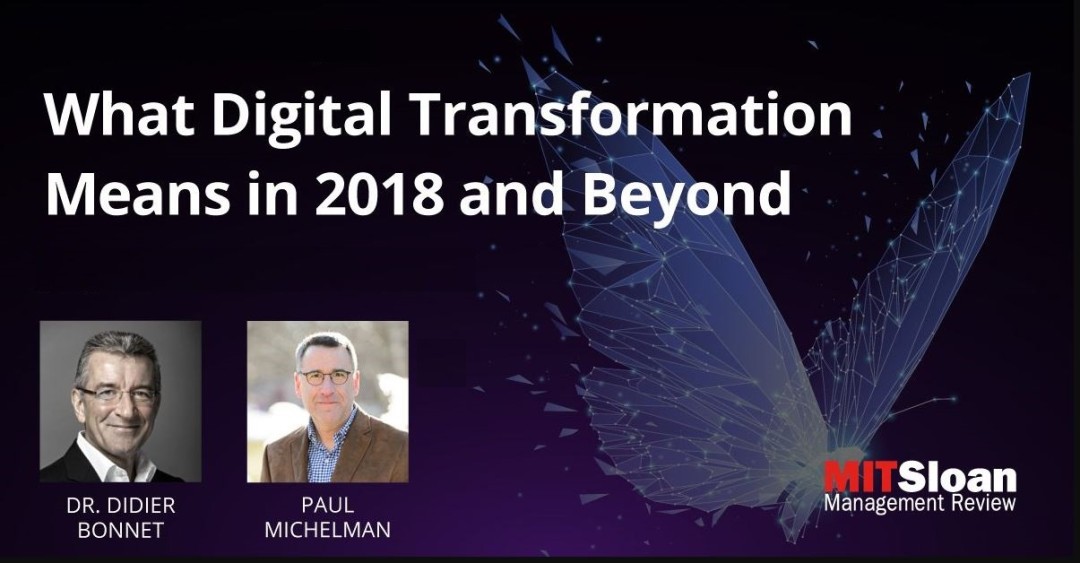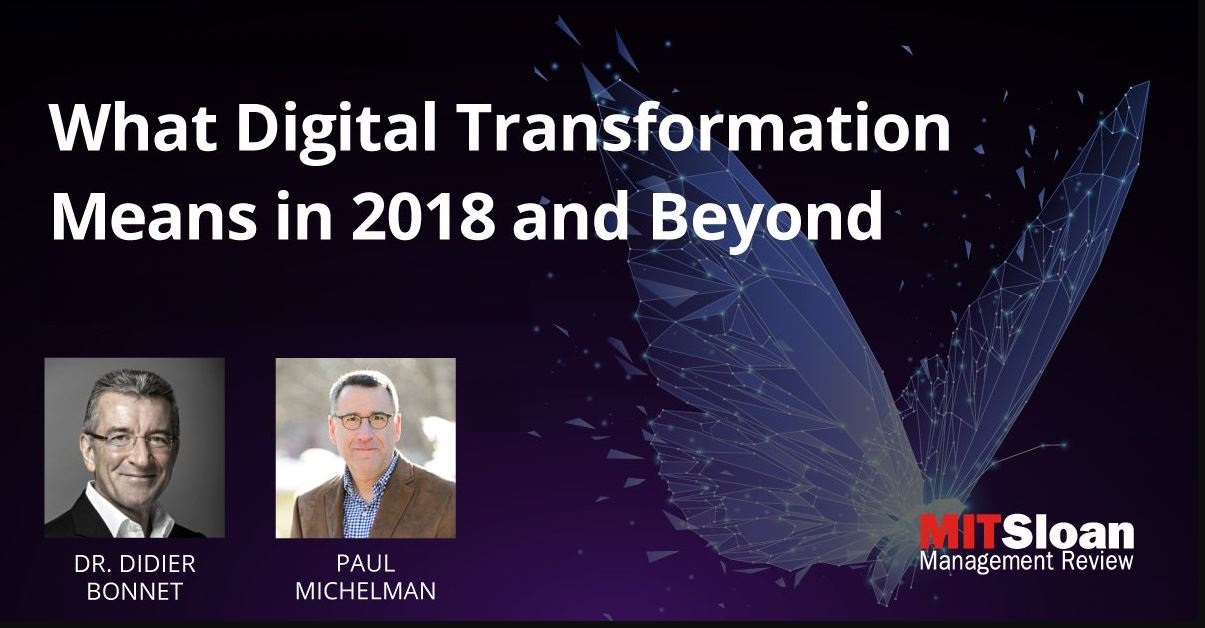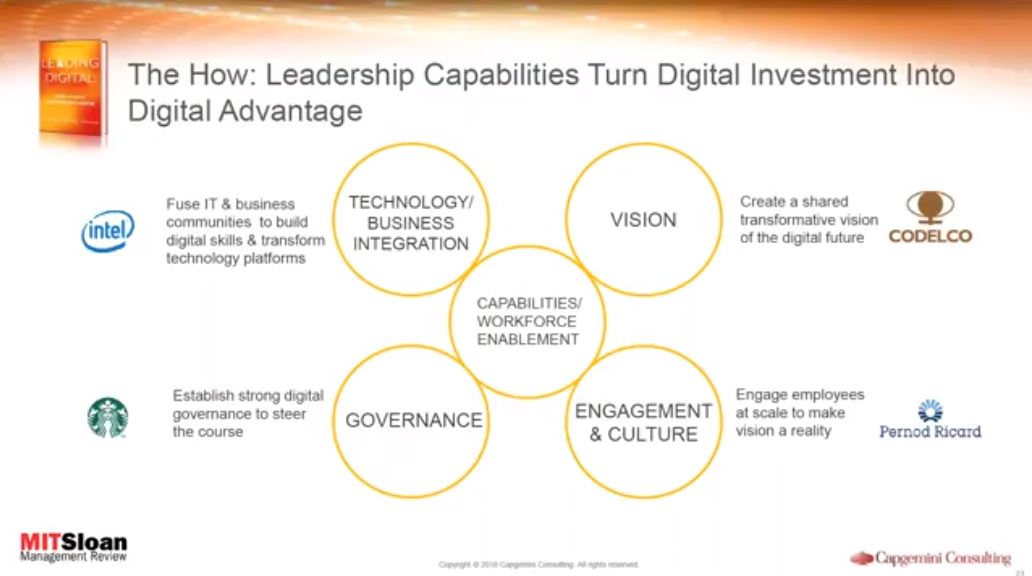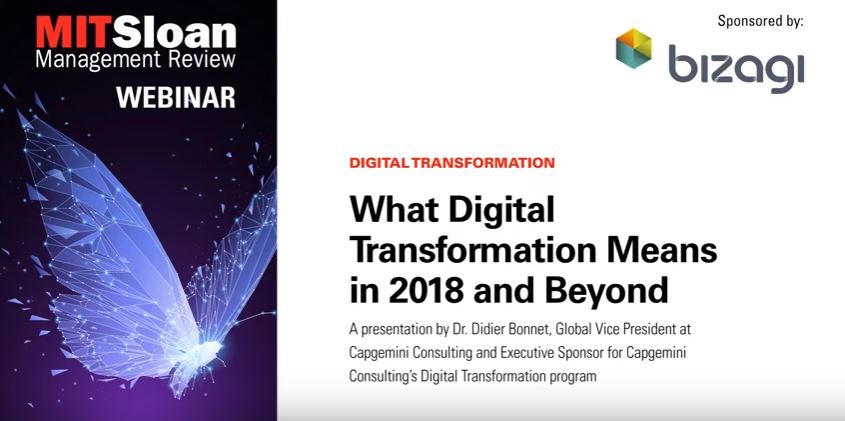Digital Transformation Strategy: How to Get it Right & Become a Digital Master
Blog: Bizagi Blog
It used to be that businesses would gain a competitive advantage in one of two ways: either by having a low-cost distribution model or differentiating themselves in the market. But that is not the case today. There are newcomers to the market who do both and have the right digital transformation strategy to grow at scale.
“The advantage seems to be more in the ability to predict and optimize through analytics and the ability to scale. The ability to scale is a huge competitive advantage,” says Dr Didier Bonnet, co-author of Leading Digital, Turning Technology into Business Transformation.
The entry of asset-light, rapidly growing businesses like Uber and Airbnb has forced well-established businesses to sit, take notice, and look at their digital transformation strategy very seriously. If you want to survive in today’s marketplace, you need to become a digital master.
“Every single company I meet, will have some form of digital program running in the company,” says Bonnet. “They’re still struggling with it, but most people have got past the stage of awareness and have gone on to deploy digital technology in their organizations.”
So, once you’ve deployed a digital transformation strategy, how do you become a digital master? In a recent webinar, hosted by Paul Michelman from MIT Sloan Management, Dr Didier Bonnet explored the findings from his research from Leading Digital and recent findings from Capgemini, highlighting what makes a Digital Master and how you can become one too.
Digital Masters are made, not born
During Bonnet’s research, he and co-authors George Westerman and Andy McAfee conducted research with 400 businesses, including Burberry, Lloyds Banking Group and Nike, to determine the secrets to a successful digital transformation strategy. They concluded that there are two key dimensions that drive the DNA of digital masters:
Digital Capability, A.K.A. ‘The What’
Businesses that make smart technology investments to improve their customer experience or digital operations. The capability comes from injecting digital technology into the organization – this includes analytics, mobility, sensors, connected networks etc.
But if it were just about investing in digital technology, then wealthier companies would always win. As we all know, this is not the case. For successful digital transformation, technology needs to be combined with…
Leadership Capability, A.K.A. ‘The How’
The way companies actually use technology to transform the business from within. This is arguably more important than simply investing in tech. Businesses need to establish how they are going to use the technology. This comes down to leadership, vision, alignment and governance.
“[Leadership] is all about engagement and culture. There’s nothing new about engagement. But in digital transformation, what’s new is you can do it at scale,” says Bonnet. This corroborates our own findings from Bizagi’s research with 500 business and IT leaders, which highlighted a lack of collaboration between departments is one of the main barriers to digital progress.
As well as leaders bringing the right people together from across the business, you also need the right tools to give people a clear, shared view to help them co-ordinate and co-experiment with ease and speed. What good is a united workforce if your technology and workflows are all still siloed?
Integrating and empowering your business
When you’ve brought your business together, you then need to establish governance to steer the course. “Governance may be a boring topic, but it’s an extremely important one,” Bonnet honestly claims.
Established organizations will likely be very siloed with a lot of legacy behavior. Bonnet says that the problem (or advantage, depending which way you look at it) with digital transformation is that it cuts right across it the business. This forces co-ordination between creative, IT, supply chain, marketing departments who all need to work together. Multi-functionality is not natural for large businesses, so they need strong governance to keep them heading in the right direction.
The relationship between business and IT functions is a particularly important one. “There is still a lot of difficulty getting integration right,” says Bonnet. “Some of the best companies I’ve seen have made huge progress with both the marketing people getting much more technology-aware and vice versa, the IT people getting much more business aware.”
But one of the most important things that Bonnet observes is the notion of capabilities and workforce enablement. “One of the biggest impediments to getting the work done is how to skill up the organization,” says Bonnet.
In Bizagi’s own research, we found that 88% think that employees need to be empowered with the tools and skills to enable digital. Moreover, 82% said they would like to be more self-sufficient with digital so they can make a bigger impact on behalf of their function and their business. It seems that to become a digital master, as well as leading, you also need to empower your business.
The Four Levels of Digital Mastery
As companies invest in digital tools and empower their workforce to transform their business, they set off on the road to becoming a digital master. Bonnet outlines the four levels of digital mastery:
The Beginners: Just developing their digital transformation strategy, but management is often skeptical of the value of advanced digital technology.
The Conservatives: Have perhaps started deploying digital solutions but do not have the management to scale it to the rest of the business. This is often the case for businesses in insurance, finance and pharmaceuticals as they are slowed down by regulation.
The Fashionistas: Often B2C, sales and marketing led companies who have lots of different digital initiatives but no overarching strategy. Often happens in decentralized organizations where development occurs at lower levels of the corporation.
The Digital Masters: Have many digital initiatives generating business value in measurable ways with everyone working towards the same goals, united by technology and eliminating siloed working.
Bizagi’s research found that while 59% of people described their company as ‘digital followers or enthusiasts’ (the conservatives or fashionistas), only 30% described themselves as ‘digital masters’. This indicates that while the majority of businesses are keen to implement digital strategies, they still need guidance.
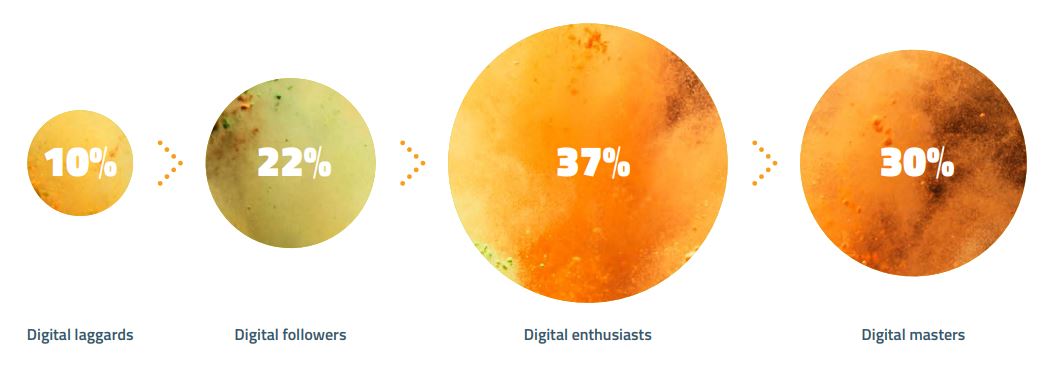
Eliminate silos to transform at scale
In the early days of digital transformation, it was viewed as technology-led, with little focus on the human element, i.e. embracing the ‘what’ and not the ‘how’. As the human and technology competency gap gets bigger, so do the silos in the business resulting in a lack of integrated technology and a lack of collaboration. This is where most companies have fallen behind on the path to digital mastery.
To succeed, companies need to integrate their technology and culture, and in turn, reskill their workforce. It’s not enough to simply unite the people in your business – you need to orchestrate a single way to manage your different technology and legacy systems if you want to effectively roll out digital transformation strategy at scale.
If you’d like to hear Bonnet explain more about the barriers to digital transformation and what leaders can do to overcome them, watch the webinar, What Digital Transformation Means in 2018 and Beyond.’ In the webinar, Bonnet goes into detail about how businesses can improve their customer engagement and digital operations including how to:
- Identify distributed intelligence that will change the way we work and the shape of our organization
- Create a win-win collaborative customer exchange
- Incorporate RPA and AI into your workflow to create successful products and improve customer engagement
Watch the webinar now to help establish your Digital Transformation Strategy.
If you’d like to find out more about how Bizagi is helping businesses to accelerate their digital transformation initiatives, why not register for our global community conference on October 16-18, Bizagi Catalyst 18.
This event will bring together a range of inspirational speakers, leading industry analysts, successful business leaders and Bizagi experts. We’re especially excited to have the multi-talented Guy Kawasaki joining us. Click here to find out more about the exciting agenda and beautiful Miami venue.

The post Digital Transformation Strategy: How to Get it Right & Become a Digital Master appeared first on Bizagi Blog – Ideas for Delivering Digital Transformation.
Leave a Comment
You must be logged in to post a comment.
